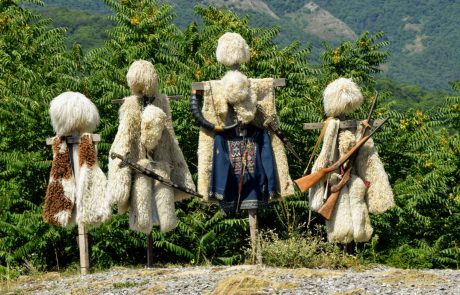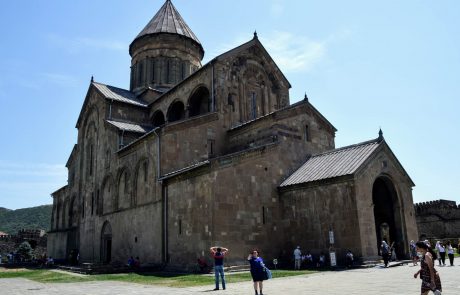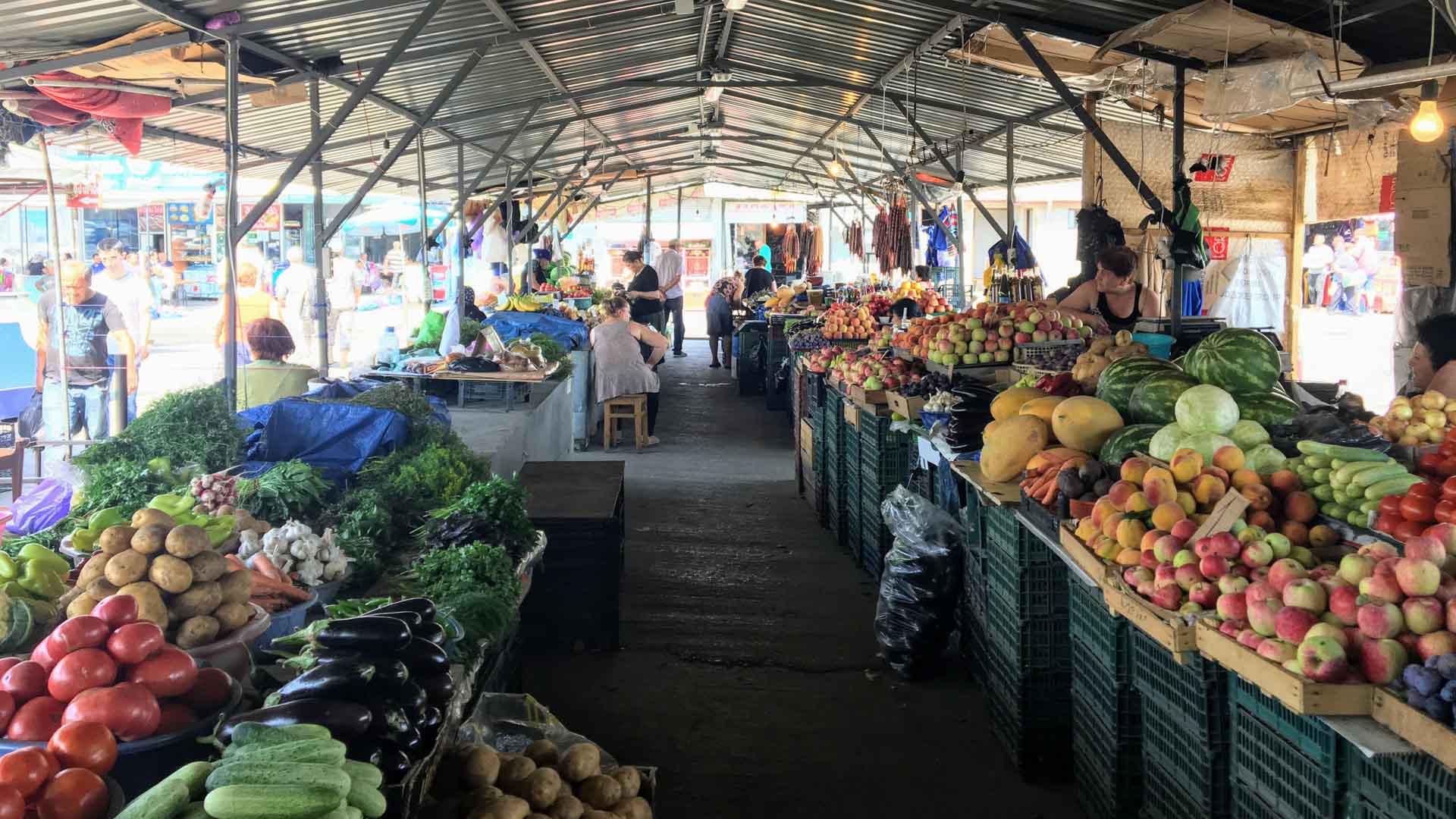Georgia is a country in Asia and is becoming increasingly popular as a tourist destination. I was impressed by the friendly people, the beautiful nature and the unique food. I combined the backpacking trip with Azerbaijan and Armenia.
- I have used and can recommend the Lonely Planet Guide for Georgia, Azerbaijan and Armenia.
- On our route we traveled from Azerbaijan to Tbilisi. Then we took a bus north to Stepantsminda and hiked from Juta to Roshka. We continued to Tbilisi and then directly to Armenia. After Armenia, we went back to Tbilisi and made day trips to David Gareja and Mtskheta, before we went back to Germany by plane.
Hiking in the Caucasus
In the north of Georgia lies the Caucasus. There are many hiking trails to admire breathtaking nature. We rented a tent in Tbilisi and hiked from Juta to Roshka over a pass of more than 3300 m. Since the way was too long for a day, we camped in the middle of the mountains. A heavy thunderstorm hit us, and we spend spontaneously a night with locals. We hitched the way back to the city.
Accommodation
- For Tbilisi, it is best to book at HostelWorld.
- In the hiking regions it's cheaper to go camping than a guest house.
Transport
- Transport in and around Tbilisi can be planned with Google Maps.
- Transport between the cities is hardly available on Rome2Rio. We used WikiVoyage and the Lonely Planet.
- The main means of transport between the cities are minibuses (Marshrutka). These leave when the bus is full, which can take up to an hour. There are also private transports that make photo stops on the way, but are significantly more expensive.
- Hitchhiking is a free alternative and safe. We used it to get back to Stepantsminda from Roshka.
Markets
The markets offer fresh vegetables and sweet-coated nuts are touted, which hang on a string.
Hiking
- The trails are best described on caucasus-trekking.com.
- We rented the tent online and picked it up in Tbilisi.
- Unnecessary luggage prior to hiking is best stored at the hostel in Tbilisi. We were at the campsite in Stepantsminda and had to stow our stuff in a tent.
- It can be better to hike in the off-season. This is colder, but it will rain less.
- I used OsmAnd's offline navigation app and imported the coordinates of WikiLoc.

















